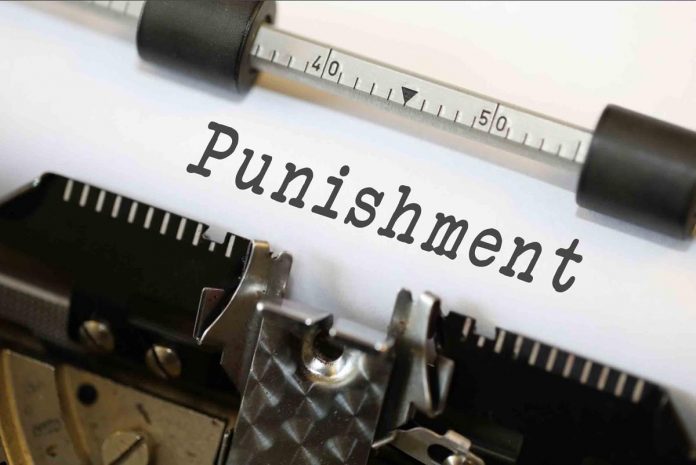This article is written by Shraddha Jain, a law student at the Institute of Law, Nirma University, Ahmedabad. This article seeks to explain the concept of reformative theory, its objective, and its criticism. The article also discusses various laws and judgements on the theory of reformation.
This article has been published by Oishika Banerji.
Table of Contents
Introduction
“An eye for an eye blinds the whole world.” This quotation by Mahatma Gandhi is the foundation of the reformative theory of punishment. Punishment should not be used simply to punish; rather, it should be used to transform. The goal of punishment should be to change the offender’s character. Punishment is a form of societal regulation that enables a society to maintain its policies and regulations, as well as the peace of its residents’ lives. As a result, if the crime is not monitored, it will cause trouble within the community and in people’s daily lives. In order to cope with improper conduct or crimes that could be defined as infringements of the law, a new theory known as the reformative theory was introduced around the 18th century. The theory’s distinguishing characteristic is that, unlike all the other theories of punishment, it focuses on the criminal instead of the crime and aims to alter the criminal’s mindset in order to rehabilitate him/her as a law-abiding citizen of society. In this article, we will be looking at various provisions and cases in which the court recognises the concept of reformative theory. Also, we will be looking at this concept from the Indian perspective.
What is the reformative theory of punishment
Crime is a violation of relationships and individuals. It produces responsibilities to rectify the situation. The victim, the violator, and society are all engaged in the search for remedies that encourage restoration, reconciliation, and a sense of security.
According to reformative theory, the aim of punishment should be to transform the culprit through the individualization approach. It is premised on the humane concept that a wrongdoer does not simply cease to be a living human being just because he commits crimes. Individualism is central to the reformative theory. It involves the transformation of offenders and faith in re-educating and trying to reform them. According to this theory, crime is linked to the prevalent physical or emotional condition of the criminal as well as the society’s environment and circumstances. As a result, the criminal is regarded as a patient. Therefore, penalisation is not used to reclaim the offender and not to torture or harass them.
According to this concept, most crimes occur as a consequence of a dispute between the criminal’s character and intent. It should be noted that one may commit an offence either because the temptation of the intent is greater or because the restriction imposed by character is relatively weak. Punishment, according to reformative theory, is more restorative than a deterrent.
The objective of reformative theory of punishment
According to the reformative or rehabilitative theory of punishment, the goal of the punishment system of the country should be to transform the criminal rather than simply penalise him. The ideology behind the notion of punishment is not just to offer fairness to the victim, but also to preserve safety and security in the community. Punishing a criminal does not only mean torturing or humiliating him, but there is a greater objective that must be achieved, which is to develop a peaceful society. In modern jurisprudence, the idea of punitive action is commonly associated with the law of crimes.
The goal of punishment is to transform the criminal into a human, so that he may once more become an ordinary, law-abiding citizen of society. The focus here is not on the offence itself, the damage done, or the deterrent impact that punishment may have, but rather on the criminal person and his personality.
Laws dealing with reformative theory of punishment
Article 72 and Article 161 of the Constitution of India
Article 72 of the Indian Constitution, 1950 enables the President of India to pardon a wrongdoer. The Governor of the state also has the same authority under Article 161 of the Indian Constitution. When the President pardons, the sentence and judgement of the convict are completely absolved of all penalties, punishments, and disqualifications. The authority of pardon arises to avoid unfairness, whether it be from severe, unfair laws or from verdicts that lead to injustice; thus, it has consistently been recognised that granting that power to an authority other than the judicial system is necessary.
The President may exercise his pardoning powers in the following cases:
- When he is evaluating a case of punishment against an individual who has violated a union law,
- When he is evaluating a case of punishment imposed by a court-martial or military court,
- When he is contemplating the death penalty.
The Juvenile Justice (Care and Protection of Children) Act, 2015
The ideology of dealing with delinquent children is among the most crucial components of the Juvenile Justice (Care and Protection of Children) Act, 2015. The Act’s goal is to restore children and make them capable members of the community. This is demonstrated by the fact that children under the age of 18 (16 in the case of heinous crimes) who commit a crime are termed delinquents rather than criminals.
Some of the main features that represent the Juvenile Justice Act’s restorative nature are as follows:
- Section 14: Even though the crime committed by the child is non-bailable, the Board, under the Juvenile Justice Act, may discharge the child on bail or put the child under the mentorship of a probation officer.
- Section 18: If a child younger than the age of 16 is convicted of a crime, the Board under the Juvenile Justice Act may order counselling services or community work or a fine (payable by the parents) or discharge the child on probation or send him to a special home for a maximum of three years. Furthermore, the Board has the authority to direct the delinquent child to access education, vocational courses, a therapeutic facility, or de-addiction programmes.
- Section 21: No child shall be sentenced to life imprisonment or death.
- Section 40: The goal of a child care centre under the Juvenile Justice Act ought to be the transformation of children.
- Section 74: The Juvenile Justice Act also bars the disclaimer of the child’s identity in the press in any form. The police are also prohibited from disclosing any information concerning the child except to the Board in accordance with the Juvenile Justice Act and only in the best interests of the child.
As a result, the Juvenile Justice Act was enacted to ensure the rehabilitation of delinquent children. It reflects the reformist strategy of the Indian penal system.
The Code of Criminal Procedure, 1973
Section 27 of the Code of Criminal Procedure, 1973 (CrPC) states that any crime not punishable with life imprisonment or death if committed by any individual who is below the age of sixteen on the day he appears or is introduced before the court may be tried by the court of the Chief Judicial Magistrate or by any court particularly authorised under the Children Act, 1960 or any other legislation in force for the time being providing for the treatment, mentoring, and rehabilitative services of youth.
Section 360 of the CrPC enables the court to grant discharge on probation on good behaviour or after admonition.
Section 432 of the CrPC says that the government has statutory power under this section that whenever an individual is convicted of any punishment, the government can suspend or remit the punishment in entirety or in proportion at any period.
Section 433 of the CrPC enables the government to commute or change the punishment of the offender from:
- a death sentence to any other form of punishment;
- life imprisonment to imprisonment not exceeding 14 years;
- rigorous imprisonment to simple imprisonment.
Sections 54 and 55 of the Indian Penal Code, 1860
These provisions of the Indian Penal Code, 1860 deal with the commutation of punishment. Section 54 of the Indian Penal Code allows for the commutation of the death penalty to any other form of punishment, and Section 55 of the Indian Penal Code allows for the commutation of a life sentence of 14 years in prison. The ability to commute a sentence refers to the ability to exchange a sentence or punishment imposed by the judicial system for a lower punishment. In other words, it refers to the ability to decrease or minimise a sentence imposed as a result of a criminal conviction. For example, a 10-year sentence may be commuted to a 5-year sentence.
The Probation of Offenders Act, 1958
Section 4 of the Probation of Offenders Act, 1958 addresses the discharge of a wrongdoer because of his or her good behaviour. Section 4 of the Act does not apply if the offender is convicted of an offence punishable by death or life imprisonment.
Indian perspective of reformative theory of punishment
Crime may be a universal truth, and the community cannot be free of it because crime is an unavoidable situation. The notion of reformative theory is to restore the current rate of offenders in India. It acts as the polishing agent to our nation’s social control system that targets the crucial philosophy of restoration of serious criminals as well as reworking the concept of punitive action as an idea of transformation of an individual as well as his behavioural conduct.
Gandhi preached the message of nonviolence and forgiveness. These are the principles that led to the independence of India. Similar principles have been implemented into India’s legal system in the form of the reformative theory of punishment. Indian courts have repeatedly emphasised the significance of the reformative theory of punishment. The Supreme Court refused to increase the accused’s punishment in the case of Gulab Singh v. Yuvraj Singh (1994), mentioning that the goal of the Indian penal system is reformative. There are numerous legal provisions that demonstrate the primacy of reform in India’s punitive system. Few present reformative social control strategies are primarily designed for the treatment of criminals based on their psychological characteristics, such as:
Probation
Probation is a criminal punishment offered under the mentorship of a corrections officer instead of the violator serving punishment in jail time. Probation entails allowing a prisoner convicted of a minor offence to go free while behaving well. A probation officer supervises or oversees the person who has been released. A probation officer is someone who supervises probation and parole and assists offenders with other modifications when they come back to society after being imprisoned. Generally, probation is given at the choice of the judge observing the case. Probation is commonly given for nonviolent offences. Furthermore, probation is more probable to be granted when the offence occurs for the first time.
Parole
Parole is the permission granted to a prisoner to be released before the end of their sentence with the condition that they will act well in society. It may be interim or permanent discharge before the completion of his/her sentence in exchange for good behaviour during the time of imprisonment.
Indeterminate sentence
In our legal system, an indeterminate sentence is a term of imprisonment that does not have a prescribed limit or maximum limit. The parole authority will determine whether to release the person on parole or not. In the last nineteenth century, the reformatory movement introduced indeterminate sentences. Under this concept, improvements made by the prisoner in the training programme were used to decide the discharge instead of a judicially imposed sentence.
Admonition
In the case of The State v. Ghanshamdas (1995), Andhra High Court held that an admonition by a court is a reprimand, censure, or reproof alerting the wrongdoer that this time he is being let off but that if he repeats the offence, he will be harshly punished in compliance with the law.
Pardon
A pardon absolves the individual of all crimes and all repercussions of the wrongdoings for which it has been awarded and all legislative or other penalties that result from a conviction.
Case law supporting the reformative theory of punishment
Mohammad Giasuddin v. State of A.P., 1977
“Every saint has a past, and every sinner has a future,” Justice Krishna Iyer observed in the case of Mohd. Giasuddin v. the State of A.P. (1977). The culture that gives rise to anti-social behaviour must be combated through reculturisation rather than absolute cruelty. As a result, the individual is the subject of concern in penology, and the primary objective is to save him for the societal structure. Thus, cruel and vicious punishment is a relic of the past and a regressive practice. Modern humans recognise punishment as a procedure of restructuring an individual who has effectively turned to criminal activity, and the present society has a major stake in the rehabilitation of the offender as a means of social defence. As a result, instead of an ‘in terrorem’ approach, a therapeutic approach must prevail in our court system because harsh confinement of the individual only results in a mental laceration. As a result, instead of an ‘in terrorem’ approach, a therapeutic approach must prevail in our court system because harsh confinement of the individual only results in a mental laceration.
Satish v. State of U.P. and Anr, 2021
In the case of Satish v. State of U.P. and Anr, 2021, the Supreme Court analysed, “While it is indisputably true that a community has the right to live a peaceful and fearless life, without free-roaming criminals causing trouble in the lives of common peace-loving people.” However, the basis of the reformative theory is equally powerful, arguing that a decent society cannot be accomplished solely through punitive behaviours and vengefulness, and instead, public harmony, fellowship, and consensual social acceptance should be cultivated. As a result, first-time offenders should be given every opportunity to apologise and look forward to a better future.
Mofil Khan vs The State of Jharkhand, 2021
In the judgement of Mofil Khan vs The State of Jharkhand, a bench comprising of Justices L Nageswara Rao, BR Gavai, and BV Nagarathna stated that the Supreme Court is obligated to obtain all relevant information about the probability of the convicts’ transformation before actually enforcing the maximum punishment of the death penalty, even if the accused is silent. Furthermore, the state is required to obtain evidence establishing that the accused has no chance of reformation or restoration. “The possibility of the accused being rehabilitated and restored is one of the mitigating factors. The State is required to obtain proof establishing that the accused has no chance of transformation or restoration. “
Criticism of the theory
Although the reformative approach to punitive action appears perfect, it has many disadvantages. The following are some disadvantages of the reformative theory of punishment:
- The national interest requires that habitual criminals who have a natural propensity to commit a crime be penalised according to the prohibitive theory rather than the reformative theory.
- When the punishment is a death sentence, the reformative theory is rendered inapplicable. This is because only life, not death, can reform the offender. As a result, death sentences are opposed to the reformative aspect of the penal system.
- The reformative theory of punishment tends to adopt an offender-centric strategy that is occasionally unfair to the victim. In their efforts to protect the rights of prisoners, courts may unintentionally violate the rights of the victims.
- In a nation like India, where poverty is a major cause of crime, if people find prisoners relaxed, they will be motivated to commit small offences and return to prison under the pretence of reform.
Conclusion
This theory aims to change criminal minds so that inmates of penal-correctional organisations can live the life of a common citizen. It aims to rehabilitate them and transform them into law-abiding members of society. This theory is opposed to all forms of corporal punishment. It tends to view the exclusion of offenders from the community as an attempt to rehabilitate them and protect the individual from social rejection. Though this theory works fantastically for the correction of juvenile offenders and first-time criminals because it relies heavily on humanistic mechanisms of punishment, it might not work as well for serious criminals. In these cases, deterrence and retributive theory become important.
Frequently Asked Questions (FAQs)
What are the four theories of punishment?
There are primarily four theories of punishment. These theories are:
- Deterrent theory;
- Retributive theory;
- Preventive theory;
- Reformative theory.
In which situations a reformative theory is not suitable?
In cases where an offender is a habitual criminal then the reformative theory might not be effective to treat him.
References
- https://www.livelaw.in/arbitration-cases/supreme-court-section-9-arbitration-interim-relief-cpc-essar-house-private-limited-vs-arcellor-mittal-nippon-steel-india-limited-2022-livelaw-sc-765-209292?infinitescroll=1
- https://journalijcar.org/sites/default/files/issue-files/2855-A-2017.pdf
- http://www.manupatra.com/roundup/334/Articles/An%20eye%20for%20an%20eye%20will%20make%20the%20whole%20world%20blind.pdf
- https://www.lawctopus.com/academike/reformative-theory-of-punishment/#:~:text=THE%20CONCEPT%20OF%20REFORMATIVE%20THEORY,to%20be%20a%20human%20being.
International Journal of Law Management & Humanities, page 1114-1119. Volume 4, Issue 3, 2021.
Students of Lawsikho courses regularly produce writing assignments and work on practical exercises as a part of their coursework and develop themselves in real-life practical skills.
LawSikho has created a telegram group for exchanging legal knowledge, referrals, and various opportunities. You can click on this link and join:
Follow us on Instagram and subscribe to our YouTube channel for more amazing legal content.
 Serato DJ Crack 2025Serato DJ PRO Crack
Serato DJ Crack 2025Serato DJ PRO Crack












 Allow notifications
Allow notifications



